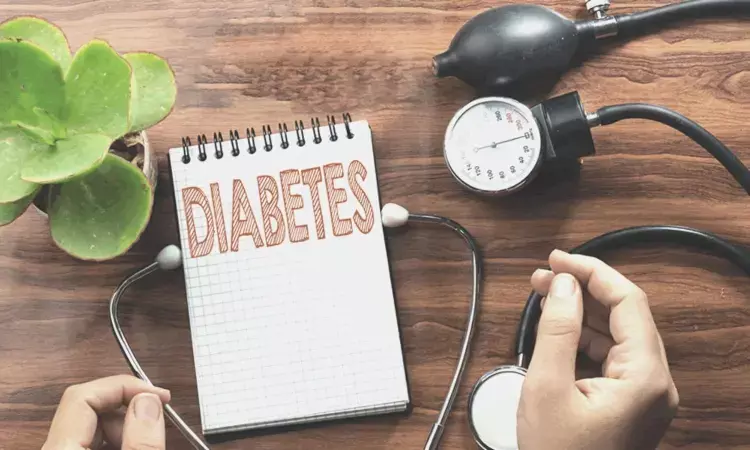- Home
- Medical news & Guidelines
- Anesthesiology
- Cardiology and CTVS
- Critical Care
- Dentistry
- Dermatology
- Diabetes and Endocrinology
- ENT
- Gastroenterology
- Medicine
- Nephrology
- Neurology
- Obstretics-Gynaecology
- Oncology
- Ophthalmology
- Orthopaedics
- Pediatrics-Neonatology
- Psychiatry
- Pulmonology
- Radiology
- Surgery
- Urology
- Laboratory Medicine
- Diet
- Nursing
- Paramedical
- Physiotherapy
- Health news
- Fact Check
- Bone Health Fact Check
- Brain Health Fact Check
- Cancer Related Fact Check
- Child Care Fact Check
- Dental and oral health fact check
- Diabetes and metabolic health fact check
- Diet and Nutrition Fact Check
- Eye and ENT Care Fact Check
- Fitness fact check
- Gut health fact check
- Heart health fact check
- Kidney health fact check
- Medical education fact check
- Men's health fact check
- Respiratory fact check
- Skin and hair care fact check
- Vaccine and Immunization fact check
- Women's health fact check
- AYUSH
- State News
- Andaman and Nicobar Islands
- Andhra Pradesh
- Arunachal Pradesh
- Assam
- Bihar
- Chandigarh
- Chattisgarh
- Dadra and Nagar Haveli
- Daman and Diu
- Delhi
- Goa
- Gujarat
- Haryana
- Himachal Pradesh
- Jammu & Kashmir
- Jharkhand
- Karnataka
- Kerala
- Ladakh
- Lakshadweep
- Madhya Pradesh
- Maharashtra
- Manipur
- Meghalaya
- Mizoram
- Nagaland
- Odisha
- Puducherry
- Punjab
- Rajasthan
- Sikkim
- Tamil Nadu
- Telangana
- Tripura
- Uttar Pradesh
- Uttrakhand
- West Bengal
- Medical Education
- Industry
Atherogenic Index of Plasma tied to elevated risk of insulin resistance and Type 2 Diabetes

China: A recent study published in Cardiovascular Diabetology has shown a link between the Atherogenic Index of Plasma (AIP) and the risk of insulin resistance (IR) and type 2 diabetes (T2D).
The NHANES 2009-2018 analysis revealed that AIP showed a J-shaped association with T2D and an inverse L-shaped association with insulin resistance, implying that AIP be reduced to a certain level to prevent type 2 diabetes and insulin resistance.
"People with AIP >− 0.47 and < 0.45 were at significantly greater risks of T2D and IR, representing an L-shaped and J-shaped link between AIP & IR and AIP & T2D, respectively," the researchers reported. "These findings indicate that AIP can be used as a monitoring indicator of IR and T2D."
Several studies have suggested epidemiological risk factors for IR-related metabolic disease, but data is still inadequate to explore the non-linear association of AIP with insulin resistance. Therefore, Lingling Chen, Department of Traditional Chinese Medicine, Shenzhen People's Hospital, Shenzhen, China, and colleagues aimed to elucidate the non-linear relationship between AIP and IR and type 2 diabetes in a cross-sectional study.
The study was conducted in the NHANES (National Health and Nutrition Survey) from 2009 to 2018, including 9,245 participants. The AIP was calculated as log10 (triglycerides/high-density lipoprotein cholesterol).
The outcome variables were type 2 diabetes and insulin resistance, defined by the 2013 ADA (American Diabetes Association) guidelines. The relationship of AIP with IR and T2D was determined using weighted multivariate logistic regression, weighted multivariate linear regression, generalized additive model, subgroup analysis, two-part logistic regression, and a smooth fitting curve.
The authors reported the following findings:
· After adjustment for age, race, gender, smoking status, education level, alcohol consumption, body mass index, vigorous/moderate physical activity, waist circumference and hypertension, AIP was found to be positively associated with fasting blood glucose (β = 0.08), glycosylated haemoglobin (β = 0.04), fasting serum insulin (β = 4.26), and homeostasis model assessment of insulin resistance (β = 0.22).
· Further studies found that AIP was associated with an increased risk of IR (OR = 1.29) and T2D (OR = 1.18).
· The positive association between AIP and IR or T2D was more significant in females than males.
· A non-linear and inverse L-shaped association was found between AIP and IR, while a J-shaped association was found between AIP and T2D.
· In patients with − 0.47 < AIP < 0.45, increased AIP was significantly associated with increased risk of IR and T2D.
"These findings indicate that reducing AIP levels within a certain range may positively affect the prevention and treatment of IR and T2D," the authors concluded. "However, there is a need for more investigations to confirm the causal relationship and underlying mechanisms."
Reference:
Yin, B., Wu, Z., Xia, Y. et al. Non-linear association of atherogenic index of plasma with insulin resistance and type 2 diabetes: a cross-sectional study. Cardiovasc Diabetol 22, 157 (2023). https://doi.org/10.1186/s12933-023-01886-5
Dr Kamal Kant Kohli-MBBS, DTCD- a chest specialist with more than 30 years of practice and a flair for writing clinical articles, Dr Kamal Kant Kohli joined Medical Dialogues as a Chief Editor of Medical News. Besides writing articles, as an editor, he proofreads and verifies all the medical content published on Medical Dialogues including those coming from journals, studies,medical conferences,guidelines etc. Email: drkohli@medicaldialogues.in. Contact no. 011-43720751


